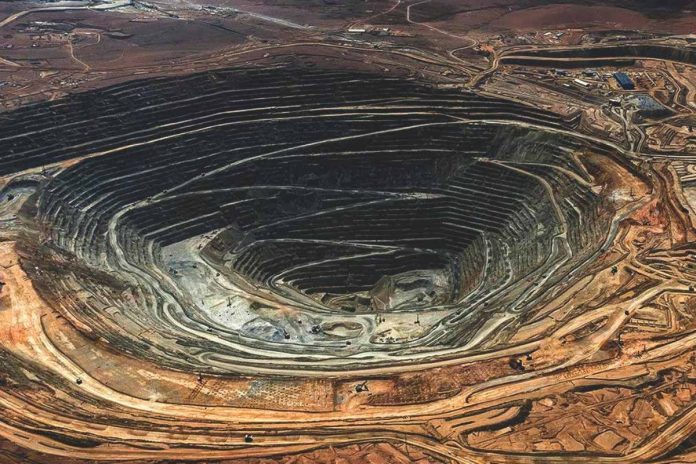A seismic find in a quiet corner of the West
A team of geologists has confirmed a vast lithium deposit straddling the Oregon–Nevada border, an unlikely landscape of volcanic plains and ranchlands. Valued at roughly $1.5 trillion, the resource could reshape America’s clean‑energy ambitions and kick‑start a new era of battery manufacturing.
Early surveys suggest unusually high‑grade material, concentrated in mineralized zones linked to ancient volcanic activity. That geology, long considered marginal for major mines, now looks like a strategic asset for the United States.
What the rocks reveal
Core samples point to lithium hosted in zinnwaldite, a mica‑type mineral that can be processed with more targeted techniques than many clay‑rich deposits. The surrounding formation appears to be the weathered remnant of a caldera, where volcanic fluids circulated and left behind concentrated veins over geologic time.
Because the mineralization is both laterally extensive and relatively uniform, engineers anticipate fewer surprises during early development. That consistency could shorten the path from discovery to production, a rare advantage in the mining sector.
Why it matters for batteries and the grid
A domestic source of this magnitude could unlock new capacity for U.S. EV assembly lines and stabilize battery supply chains. Automakers have struggled with raw‑material bottlenecks, and lithium prices have swung with global politics and demand cycles.
With this discovery, planners see openings for vertically integrated manufacturing, from ore to cells to pack assembly. Consumers could benefit from lower costs, more model availability, and faster delivery timelines.
- Enough material for millions of electric‑vehicle batteries
- Expanded capacity for grid‑scale storage projects
- Inputs for consumer electronics and defense systems
- Strategic reserves to cushion market volatility
Local impact without the boom‑and‑bust
Communities on both sides of the border are preparing for phased development that avoids the classic boom‑and‑bust mining cycle. Early assessment could employ hundreds of workers, while infrastructure build‑out would require thousands of skilled tradespeople and contractors.
If full production proceeds, long‑term employment could support schools, healthcare, and small‑business growth across the high desert. Leaders are already discussing housing, water, and transport planning to match the scale of anticipated investment.
The environmental test
Traditional lithium production often uses lots of water and leaves a sizable footprint. Here, operators are evaluating direct‑lithium‑extraction approaches, selective leaching, and closed‑loop reagents to pare down impacts and recycle critical inputs.
Wildlife corridors and sagebrush‑steppe habitats demand careful siting, dust control, and continuous monitoring of aquifers. A rigorous baseline of air, water, and soil data will be essential to track changes and earn public trust.
“Innovating on extraction isn’t a nice‑to‑have; it’s the price of admission for projects of this scale,” said one project scientist during a technical briefing.
Technology that could change the equation
Miners and researchers are piloting modular plants that can scale incrementally, reducing up‑front disturbance and spreading risk across staged expansions. Real‑time spectral mapping and machine‑learning models may guide selective mining to minimize waste and improve recovery rates.
If processing can be powered by renewable electricity, the resulting lithium could carry a lower carbon footprint than imports from distant jurisdictions. That advantage matters as automakers tally embedded emissions across their supply chains.
A new node in the global lithium map
Today, most lithium flows from Australia, Chile, China, and Argentina. A major U.S. source would rebalance geopolitics, potentially moderating price swings and giving manufacturers more options for long‑term contracts and domestic content rules.
Markets have already shown volatility as traders reassess supply‑demand curves. Exploration firms focused on battery minerals have rallied, anticipating more joint ventures, forward offtakes, and government‑backed financing.
Policy, permits, and public confidence
Speed will depend on permitting efficiency, tribal and community consultation, and clear environmental standards. Agencies are under pressure to move faster while maintaining safeguards, a balance that will define the project’s ultimate license to operate.
Transparent benefit‑sharing, reclamation bonds, and strict performance metrics can turn skepticism into durable support. The goal is a mine that earns its social contract every year it remains in operation.
Measured optimism, real work ahead
This discovery sits at the nexus of energy, industry, and environmental stewardship. If science‑driven practices guide each phase, the deposit could anchor a resilient supply chain while safeguarding a fragile landscape.
The stakes are enormous: cleaner transport, a sturdier electrical grid, and a surge of high‑quality jobs in a place few expected to lead a global transition. Now comes the careful, difficult work of turning rock into responsible prosperity.






